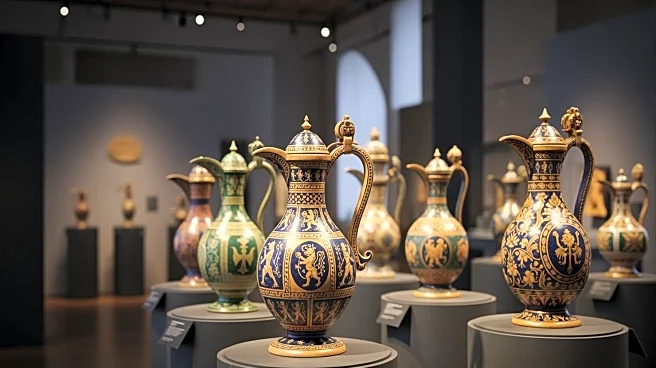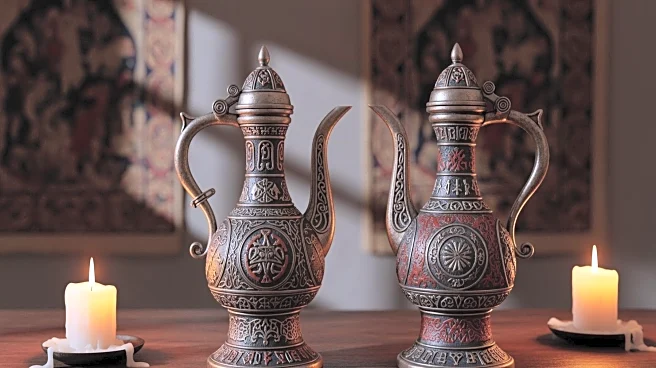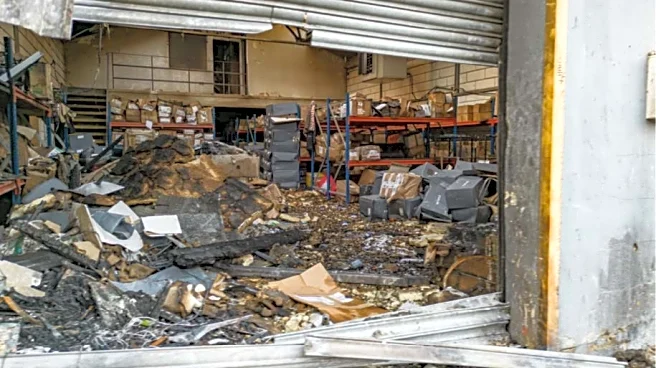What's Happening?
Three medieval ewers, including the notable Asante Ewer, are now on display at the York Army Museum. These artifacts, originally crafted in England during the 1300s, have a complex history involving their
transportation to the Asante kingdom in present-day Ghana. The Asante Ewer, a large bronze vessel, was seized by British troops in 1896 during the Anglo-Asante Wars and later acquired by the British Museum. The display at York Army Museum, which runs until February 21, 2026, includes other items taken during the wars, such as a royal chair and sword. The ewers will later be exhibited at the British Museum from March 5 to July 7, 2026. The exhibition is accompanied by a book that delves into the history and significance of these objects.
Why It's Important?
The exhibition of these ewers highlights the complex history of cultural artifacts and their movement across continents due to colonial activities. The Asante Ewer, in particular, serves as a symbol of the intricate relationships between Europe and Africa during the medieval period. The display raises questions about the ownership and repatriation of cultural heritage, a topic of ongoing debate in the museum world. The exhibition provides an opportunity for dialogue about the historical context of these objects and their significance in both British and Ghanaian history. It also underscores the role of museums in preserving and interpreting artifacts with contested histories.
What's Next?
There is potential for the ewers to be lent to the royal museum in Kumasi, Ghana, in the near future. This move could foster cultural exchange and dialogue between the UK and Ghana, addressing issues of historical justice and cultural restitution. The upcoming exhibitions at the British Museum and York Army Museum will likely continue to engage audiences in discussions about the provenance and ethical considerations surrounding such artifacts.
Beyond the Headlines
The exhibition of the ewers not only sheds light on their historical journey but also prompts a reevaluation of the narratives constructed around colonial artifacts. The transformation of these objects from ceremonial items in the Asante kingdom to war trophies and museum pieces reflects broader themes of power, cultural exchange, and historical memory. The potential loan to Ghana could mark a significant step in the ongoing conversation about the restitution of cultural property and the responsibilities of museums in addressing colonial legacies.












